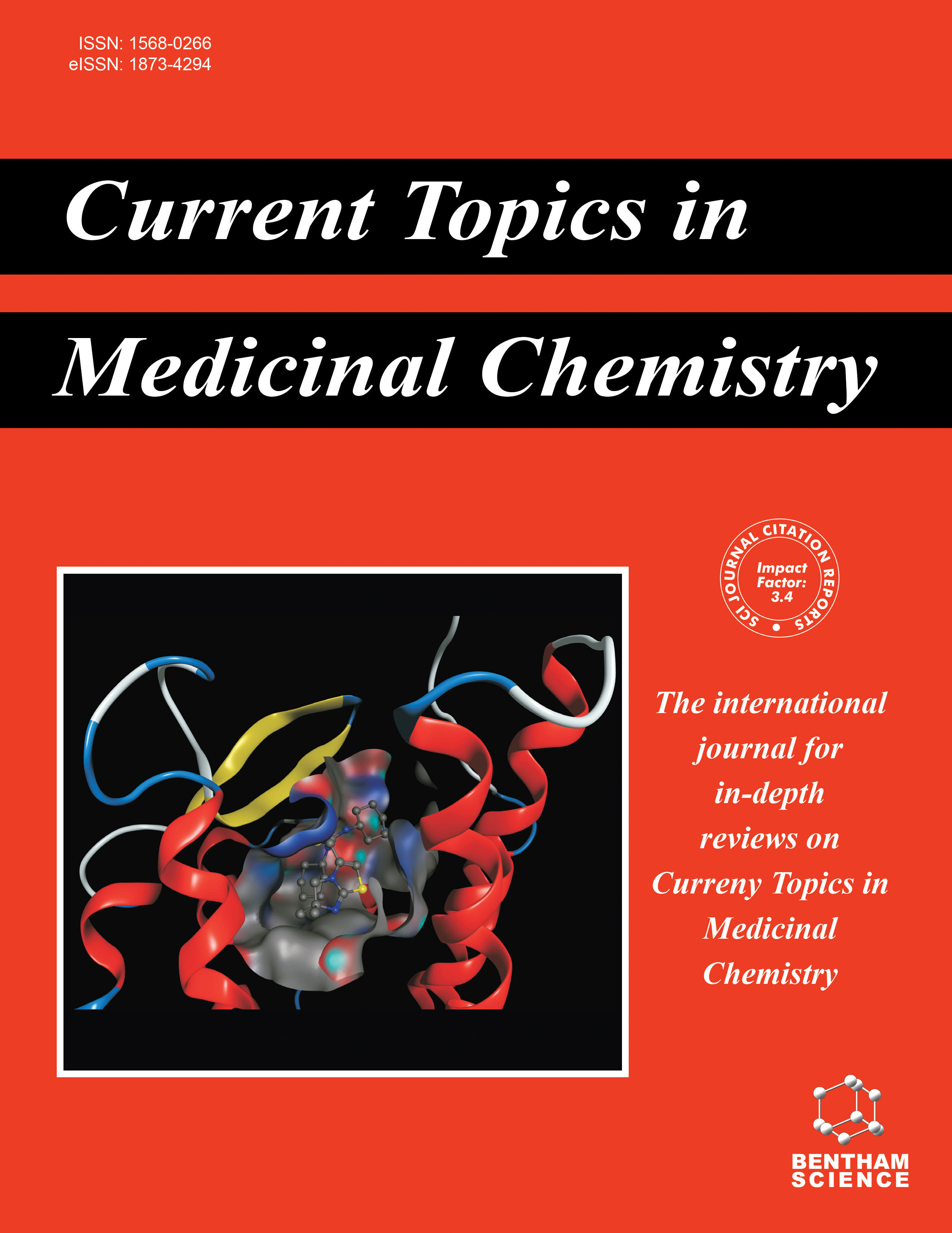- Home
- A-Z Publications
- Current Topics in Medicinal Chemistry
- Previous Issues
- Volume 23, Issue 9, 2023
Current Topics in Medicinal Chemistry - Volume 23, Issue 9, 2023
Volume 23, Issue 9, 2023
-
-
Retrospective Review of Chromane Analogues as Anti-protozoal Leads: A Decade's Worth of Evolution
More LessTropical, vector-borne, and neglected diseases with a limited number of medication therapies include Leishmaniasis, Malaria, Chagas and Human African Trypanosomiasis (HAT). Chromones are a large class of heterocyclic compounds with significant applications. This heterocycle has long aroused the interest of scientists and the general public from biosynthetic and synthetic points of view owing to its interesting pharmaco Read More
-
-
-
Structural Insight into Privileged Heterocycles as Anti-Trypanosoma cruzi and brucei Agents
More LessAuthors: Jafar Abbasi Shiran, Mina Ghanbari, Elaheh Mohammadnejadi and Nima Razzaghi-AslTrypanosomiasis is caused by parasitic protozoan trypanosomes in vertebrates. T. cruzi and T. brucei are causative agents of Chagas disease (CD) and Human African Trypanosomiasis (HAT), respectively. These life-threatening diseases are a serious threat to public health, with considerable incidence in sub-Saharan African and continental Latin America countries. Although WHO validated mitigated number of HAT cases in To Read More
-
-
-
A Quinquennial Review on Recent Advancements and Developments in Search of Anti-malarial Agents
More LessMalaria has been a major parasitic disease in tropical and subtropical regions and is estimated to kill between one and two million people (mainly children) every year. Novel anti-malarial agents are urgently needed to combat the malarial parasites enduring resistance to the current medications, leading to increased morbidity and mortality. The heterocycles, holding a prominent position in chemistry and found in bot Read More
-
-
-
Steroid and Triterpenoid Compounds with Antiparasitic Properties
More LessAuthors: Ivana Z. Kuzminac, Marina P. Savić, Jovana. J. Ajduković and Andrea R. NikolićParasitic diseases affect millions of people and animals, predominantly in the tropics, including visitors to tropical countries and other areas. Efficient and low-cost treatments for infections caused by various parasites are not yet available. Antiparasitic drugs have some drawbacks, such as toxicity and the development of resistance by parasites. This has motivated many researchers to focus on the discovery of safe, effectiv Read More
-
-
-
Employing “Red Flags” to Fight the Most Neglected Diseases: Nitroaromatic as Still Suitable Tools to Treat Human and Veterinary Parasitosis
More LessNitroaromatic compounds have been used for treating parasitic diseases since the 1960s. Pharmacological alternatives to treat them are under observation. However, for the most neglected diseases, such as those caused by worms and less known protozoans, nitro compounds are still among the drugs of choice, despite their well-known collateral effects. In this review, we describe the chemistry and the uses of the still Read More
-
Volumes & issues
-
Volume 25 (2025)
-
Volume 24 (2024)
-
Volume 23 (2023)
-
Volume 22 (2022)
-
Volume 21 (2021)
-
Volume 20 (2020)
-
Volume 19 (2019)
-
Volume 18 (2018)
-
Volume 17 (2017)
-
Volume 16 (2016)
-
Volume 15 (2015)
-
Volume 14 (2014)
-
Volume 13 (2013)
-
Volume 12 (2012)
-
Volume 11 (2011)
-
Volume 10 (2010)
-
Volume 9 (2009)
-
Volume 8 (2008)
-
Volume 7 (2007)
-
Volume 6 (2006)
-
Volume 5 (2005)
-
Volume 4 (2004)
-
Volume 3 (2003)
-
Volume 2 (2002)
-
Volume 1 (2001)
Most Read This Month
Article
content/journals/ctmc
Journal
10
5
false
en


